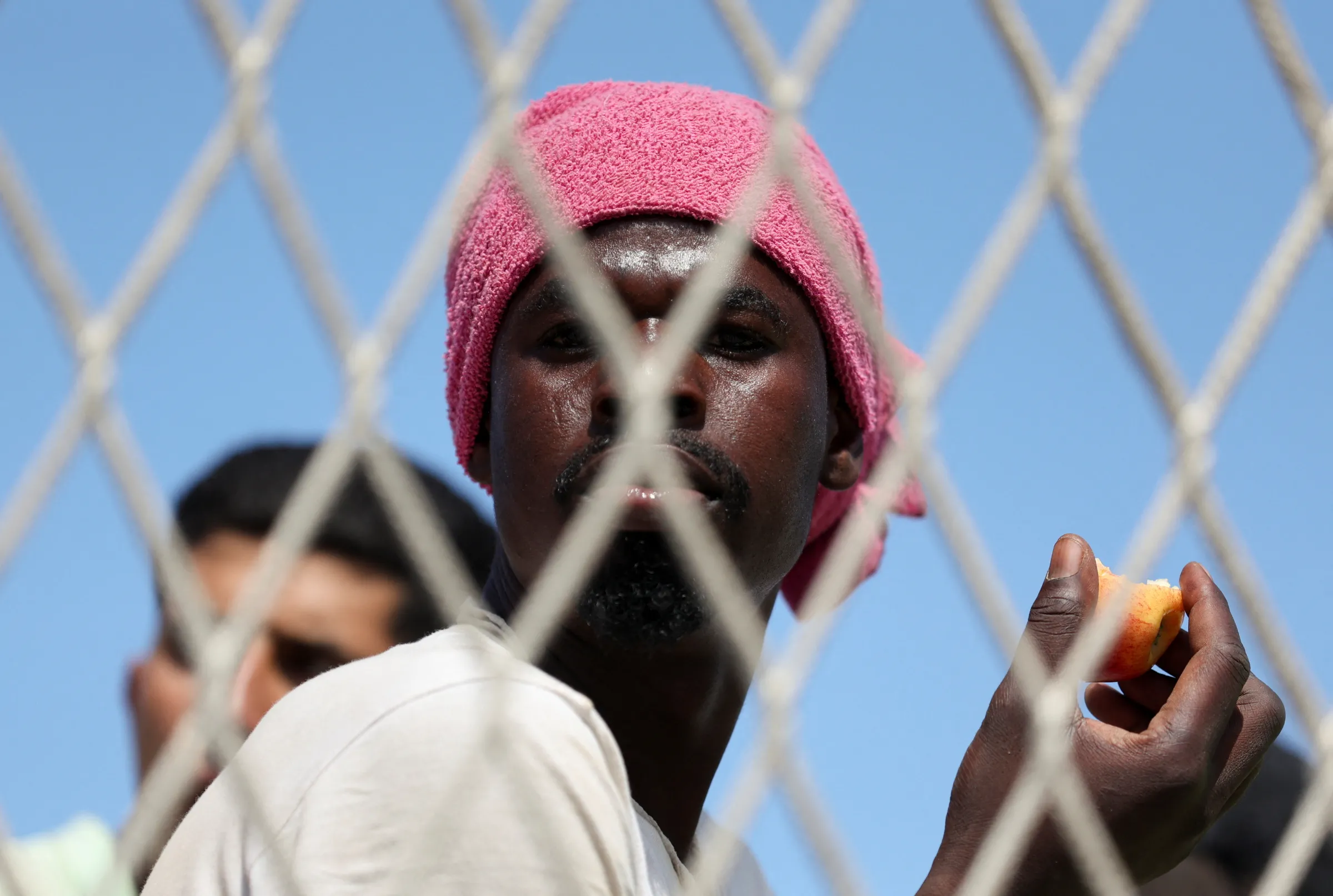What is a safe third country for migrants?

A migrant looks on as he sits on the deck of the military ship 'Cassiopea' to be transferred to the mainland, on the Sicilian island of Lampedusa, Italy, September 15, 2023. REUTERS/Yara Nardi
What’s the context?
European governments want to make it easier to send asylum seekers to "safe third countries" as part of overhaul of migration laws.
LONDON - European lawmakers have proposed changes to the safe third country (STC) concept to make it easier for asylum seekers to be transferred to a country other than the one where they made their application for protection.
The review, part of the EU's overhaul of its immigration rules, proposes scrapping the requirement that an asylum seeker have a connection to a safe third country in order to be sent there.
Despite a 38% drop in illegal migrant entries to the EU last year to the lowest level since 2021, immigration remains a highly contentious issue among the 27 member states.
The proposed changes aim to speed up asylum procedures by making it easier to apply the safe third country concept and remove applicants from EU territory on the grounds that their application should be examined elsewhere.
Here is what you need to know about the STC concept.
What is a safe third country?
In global asylum policies, governments receiving migrants consider a safe third country somewhere that asylum applicants can be transferred to seek protection through asylum.
The concept is used to reject applications as inadmissible on the grounds that they should be examined elsewhere.
The U.N. refugee agency UNHCR's guidelines recommend that an asylum seeker should have a connection to a safe third country and that this should not solely be based on whether they have transited through that land.
But this recommendation is not mandatory under international law.
A safe third country must be able to protect asylum seekers from forcible return to the country they have fled, according to UNHCR guidelines.
Some countries have lists designating safe third countries.
Five EU countries - Estonia, Germany, Greece, Hungary and Ireland - as well as Switzerland have national lists of safe third countries.
What is the EU proposing?
The EU's New Pact on Migration and Asylum, agreed in late 2023 and coming into effect next year, aims to make asylum procedures more efficient and limit irregular arrivals to the bloc.
The pact loosens the standards for designating a safe third country, where the third country refers to a country outside the EU.
The updates proposed in May broaden the STC concept even further by removing a mandatory connection criteria.
This means asylum seekers could be returned to countries they have merely transited through on their way to seeking asylum in the EU or to countries they have never stepped foot in.
Under the rules, if the EU reaches an agreement with a third country allowing the transfer of migrants, it will be considered safe and sufficient grounds for deportation of an asylum seeker to that country.
The EU has also proposed changes to the appeal process, meaning that asylum seekers could be removed to a third country before their appeal has been heard.
The European Parliament and member states must agree on the proposed changes to the STC concept before they are adopted.
The EU is making what other changes to its migration rules?
The European Commission proposed in March an overhaul of the legislation on returning migrants to complement the 2023 pact on migration and asylum.
As part of the overhaul, the EU would allow member countries to set up centres in non-EU countries where migrants, whose asylum claims were rejected, would await deportation.
Then in April this year, the EU announced a list of "safe countries of origin" that included Bangladesh, Colombia, India, Kosovo, Morocco, Egypt and Tunisia, but could be expanded or reviewed over time.
Candidates from those countries would have their applications reviewed through a quicker process to help member states speed up applications likely to be unsuccessful.
This story was updated on May 21 with the Commission's proposed updates to the safe third country concept.
(Reporting by Beatrice Tridimas; Editing by Ana Nicolaci da Costa; Ayla Jean Yackley and Clar Ni Chonghaile)
Context is powered by the Thomson Reuters Foundation Newsroom.
Our Standards: Thomson Reuters Trust Principles
Tags
- Migration

















